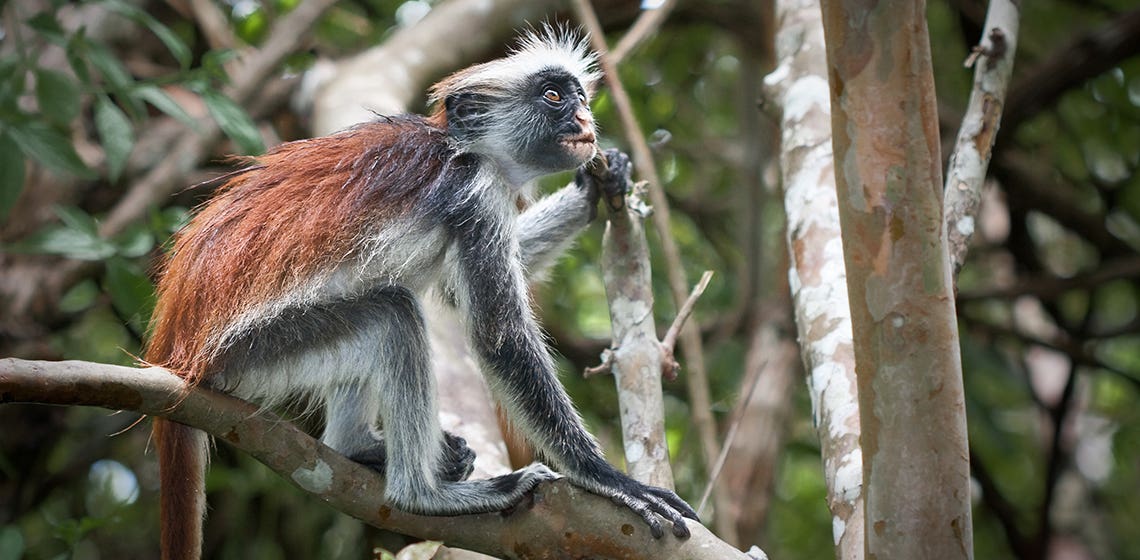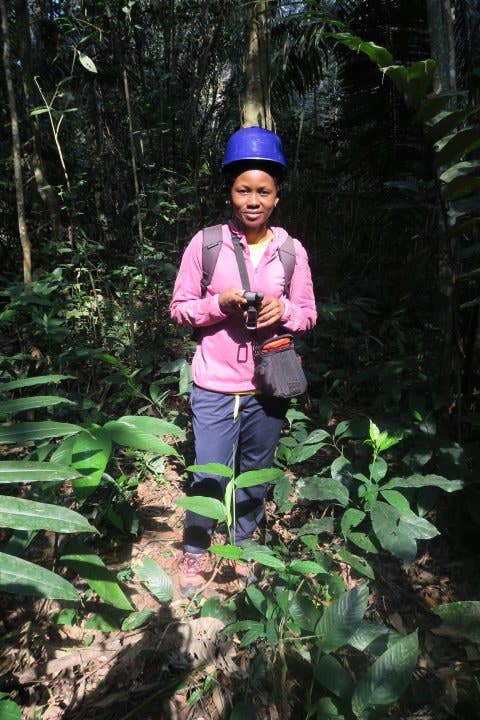Red colobus monkeys are so special because they are very beautiful, unique, and perfect indicators of ecosystem health or habitat change since they are usually the first group of primates to leave a habitat when any disturbances or degradation occur. Moreover, their diversity reflects the various bioregions of the African forested areas at large.
Florence Aghomo’s role on Team Re:wild is being an enthusiastic champion of red colobus monkeys. Venturing into dense and difficult-to-navigate forests where they live, she searches the canopies of trees looking for the large primates. When she captures a glimpse of an Endangered red colobus monkey, she is captivated, even momentarily forgetting to take notes on their behavior and ecology.
Florence was inspired to study and protect red colobus while working in the Korup rainforest in 2010. The local communities in Korup intimately knew the primates that lived in the forests around them, to the point of being able to mimic their vocalizations. Fascinated, she began to collect all the data she could about the species of red colobus living in Korup.
“They are so special because they are very beautiful, unique, and perfect indicators of ecosystem health or habitat change since they are usually the first group of primates to leave a habitat when any disturbances or degradation occur,” she says. “Moreover, their diversity reflects the various bioregions of the African forested areas at large.”
The more she studied the red colobus, the more she realized that they were in trouble. Species like Preuss’s Red Colobus were being over-hunted. Florence organized a group of students and began working to protect primates like red colobus and mangabays and the forests where they live.
Florence is now the red colobus conservation coordinator for the IUCN SSC Primate Specialist Group and the African Primatological Society and is committed to building and leading a network of conservationists to protect the 18 forms of red colobus. The Red Colobus Conservation Network, as the community of volunteers, organizations and institutions is called, are all working together to save the monkeys. In 2021, she was named one of the top 100 conservation leaders in Africa for her conservation leadership and extensive work to protect red colobus.
Top photo: A Temnick's Red Colobus, one of the 18 forms of Red Colobus found across Africa. (James Slade/Re:wild)
Partners
Wild Facts
There are 18 forms of red colobus monkeys across Africa.
Red colobus are indicator species for the forests they live in.
Red colobus are difficult species to study because there are so few and the forests they live in are largely inaccessible.

